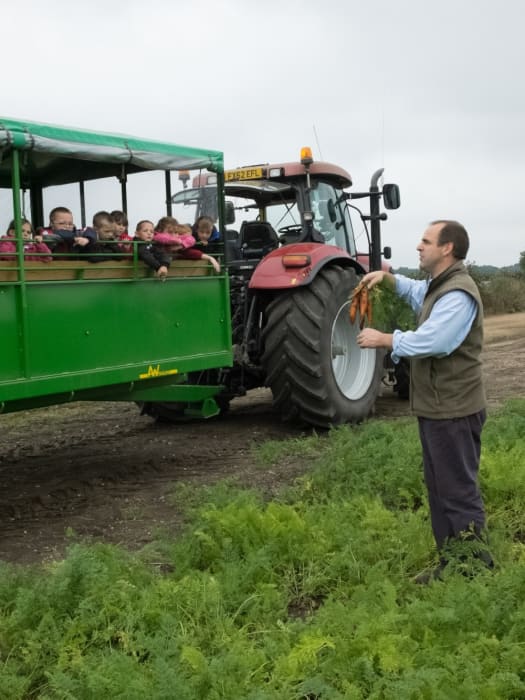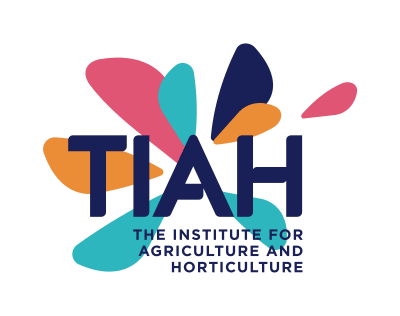How do schools usually find you?
We have our own website, and lots of schools come back again and again with new pupils. I also send an email out to Lincolnshire schools so they’re aware of what we offer.
How do you decide what to do during the visit?
We have a standard format that works for our farm. It’s an arable farm and sometimes schools like to come at different times of the year to compare the differences between seasons, such as planting and harvest. We can also weave in different topics if the class is working on something particular.
What kinds of activities can you do on a farm?
We do lots of different activities, but visits always include a tour of the farm, partly on foot so we can talk about the different fields and what we have growing there, and partly on our tractor-pulled trailer. We also do lots of nature activities, such as a scavenger hunt and a listening exercise where we encourage children to record all the sounds they can hear.
Can you describe a typical visit?
We start each visit in our classroom with a 25 minute introduction where we talk about what an arable farm is, what crops we grow and what they might eat that has been grown on the farm. This is followed by a farm walk and some time spent in the activity area before being picked up by the trailer and taken around the other side of the farm. We finish back at the classroom where we wash hands and talk about what has been learned. We then send children home with a farming workbook produced by the NFU.
How can a class prepare to get the most out of their visit?
Read the story of The Little Red Hen, because this is a great way to introduce children to the connection between wheat the plant and bread that we eat. You could also show the class pictures of different crops and what they look like in the field, or talk about gardening as this is something they can then relate to farming on an industrial scale.
What do you do if it rains?
Unless it is really dramatic rain we just put on wellies and coats and go on with the visit as usual, although if it looks like it will be a short shower we might swap the trailer ride and walk. The children never mind the rain and often really enjoy it!
How long does a visit usually take?
Two and a half hours, and we run two a day so if a school books for both sessions they can stay for lunch in between.
What about health and safety?
We have really thought about it and designed our standard trip to make sure it is safe. For example, we send instructions that buses must drop children off at the barn door so children don’t end up in the farm yard where there is machinery and vehicles. We do our own risk assessment which we share with the school so they can create theirs. Before we leave the classroom, the children have a health and safety briefing and they wash their hands before having a drink and snack and when we return. Most teachers are apprehensive about health and safety at first but are reassured after they have come for their pre-visit.
What provision can you make for pupils with SEN?
In most cases the school is aware of any adjustments that need to be made. The farm walk is wheelchair accessible, including the trailer which has a ramp and safety straps.
How much does it cost to visit your farm?
We are in an environmental stewardship scheme, which means Natural England covers the cost of school visits and they are free to schools.
Finally, every farm is different so what is unique about a visit to your farm?
On our farm we have the ruin of the abbey, which the farm is named after, and St. Leonard’s Church which dates back to 1215. We can talk about the ruin and some schools have linked it to their work on history or we have done some art activities on different shapes in the church.















